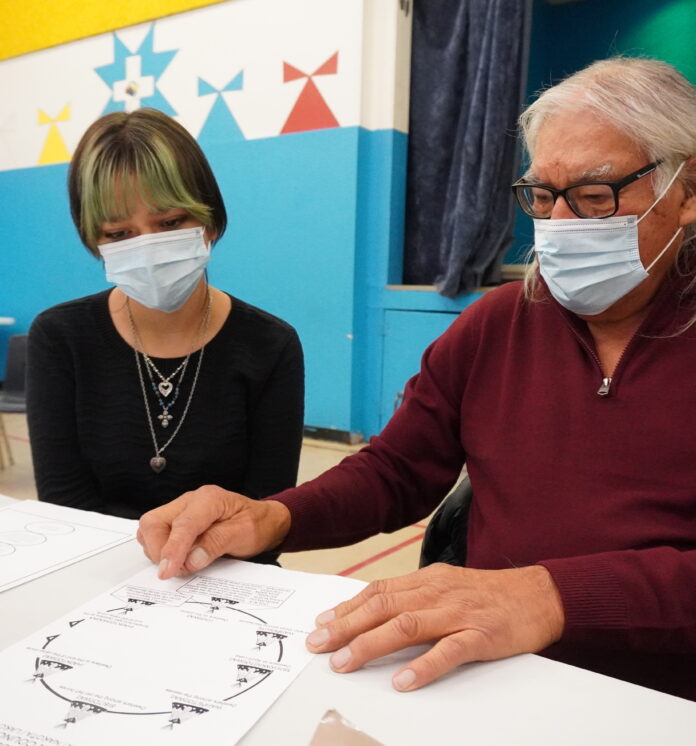
A woman and her father are trying to retain the Dakota language of the Wahpeton Dakota Nation through a new language program in the community.
The program started in March and is currently on pause at the moment with the rise of COVID-19 cases.
Lois Standing and her father Cy Standing, who is a first language speaker, along with other relatives wanted to start the group right away so they could meet with others who wanted to share and learn the language.
“We saw the need out there and the desire so we wanted to have these gatherings in Wahpeton to have them accessible to members on the reserve,” Standing said.
Standing estimates that there are about eight people left in Wahpeton who can speak Dakota fluently. She considers this number low, and has been told by elders that there was a time when it was the main language spoken within households and the community.
The group of 15 is comprised of first language speakers who teach Dakota, and participants who learn from them.
Some participants live on the reserve while others drive in from Conquest, Saskatoon, and Prince Albert.
The learning environment isn’t something you would typically see in other language classes, but rather “community-focused,” Standing says.
“We were all together, sitting around facing each other, and then we all took turns speaking and practicing so it wasn’t really a format of a lecture style, it was more of the hearing, and practicing, and then sharing, and it had a nice flow to it.”
Standing learned the Dakota language through her father and other family members, as well as through resources she found online. However, she found some words in Dakota are unique to different communities that speak the language.
“I felt it was really important that we learn directly from our own speakers because things will be different from community to community. So it was important to have them explain those differences and to teach us the language of our community.”
There are also sounds specific to the Dakota language that aren’t in English the group has taken time practicing.
“We’ve also spent time on a mapping exercise connecting what families lived where, connecting with our Dakota names, connecting with the land. It is important for us to begin by connecting in this way so that we can truly connect with who we are as a people through our traditional language,” said Cy Standing in a press release.
Lois Standing is looking into how to make the program accessible to people who want to join but can’t drive in on the weekends, whether that means recording the group sessions or having the program online.

